Popular blog postings
Latest blog postings
Giro Trans E70 review09.07.2015
For 2015 Giro updated their popular Trans shoe with a slightly different carbon sole and new designs. I've been riding these shoes for the past 3 months, here's my opinion on them.
Still featuring the same Easton EC70 carbon sole, the Trans E70 now has replaceable heel walking pads. The actual design of the sole has varied slightly, and the upper has changed from a glossy to a matte finish.
The ratchet mechanism has also been redesigned for greater aerodynamics. However, Giro don't make any claims as to how much more aerodynamic it is. It features a lower profile design which looks neater, but doesn't function as well as the previous design.
The new low(er) profile ratchet design I feel is inferior to the older, higher profile design. When releasing the ratchet, the new design only releases one or two buckles at a time, whereas the old one can release all the buckles in one go. When tightening, the old design can tighten anywhere between one and three buckles in one sweep, contrasting to the new design which can only tighten one buckle per sweep. This means the new design isn't as fast when you're trying to make on the fly adjustments. I personally value faster on the fly adjustments in contrast to aerodynamics, so I fitted the old ratchet mechanism onto my new E70 shoes.
As you're probably guessing, not much of the actual fit has changed much. The shoes still feature Giro's Supernatural Fit Kit, with Aegis topsheet. My only criticism of the Fit Kit is that the Aegis topsheet looks a little cheap next to the X-static top sheet found in the higher end models, but it works just as well.
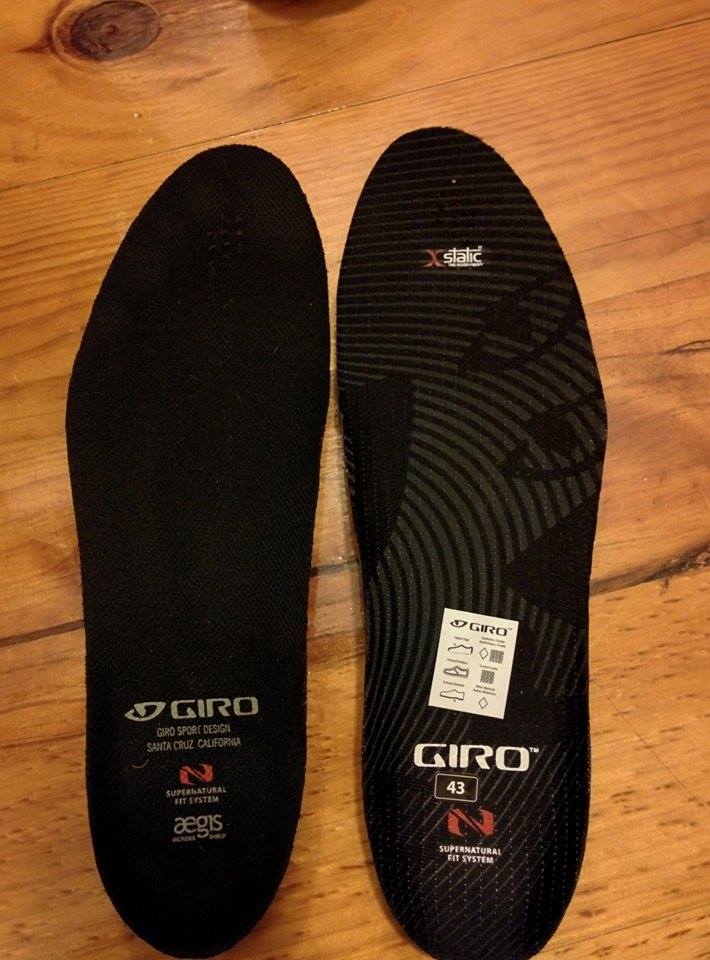
Two footbeds side by side, on the left is the Aegis topsheet and on the right is the X-Static sheet.
I usually find I have to swap the insoles of my shoes with Specialized Body Geometry SL insoles. However I've been pretty happy with the Supernatural Fit Kit, it offers the right amount of arch support for me and has a similar metatarsal button design. For reference I use a Red+ (low arch) Body Geometry insole, and I find the orange arch support (medium support) offered by the Supernatural Fit Kit similar in terms of arch support. You can obviously customise the Fit Kit to your needs. It's a smart idea allowing Giro to supply a one size fits all insole, removing the complexity and added cost of having to buy an aftermarket insole to suit your new shoes.
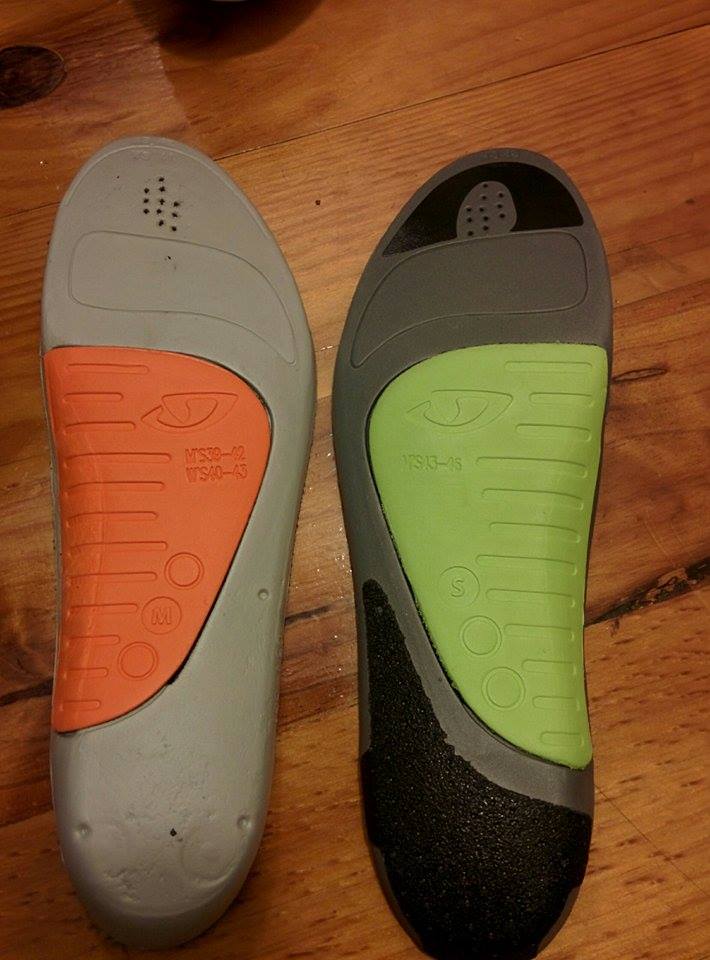
The reverse side of the two footbeds, The X-Static footbed (right) has black inserts, which prevent the footbeds from slipping and increases the stiffness of the footbeds.
One slight difference in the fit of the E70 vs the original Trans is in the heel cup, the E70 has a much more supportive heel cup. The heel cup insert of the two models feels the same, however the E70 features more padding around the heel, which helps keep the heel planted.
You'll find that Giro's sizing is a little larger than most companies. For reference I run a size 42.5 Shimano and Bont, but I find the 42.5 a little roomy in the Giro shoes. I find the 42 a better fit, it's similar to the 42.5 Bont shoes lengthwise, but doesn't have the same wide toe box, which suits my narrow feet. In terms of Shimano I find the Giro 42 in-between the Shimano 42.5 and Shimano 42. I'd advise trying on half a size smaller than what you normally wear. Giro do have a shoe size conversion tool, which I found useful, especially the US Mens flavour if using Bont shoes as a reference point (size 42.5 Bont shoes are size 9 US, which correlates to a 42 Giro shoe).
Another interesting thing to note is the low stack height of these shoes, a claimed 6.5mm. While this is still almost double the stack height of my regular Bont shoes (3.8mm) they're much closer than most other brands (e.g. Spiuk). Despite the thin sole these shoes are still plenty stiff, I found them to be of similar stiffness to the higher end Giro Factor and other shoes from competitors (e.g. Bont A1, Shimano R241). These shoes are slightly stiffer than Shimano R170 shoes and Specialized Expert Road shoes. I determined shoe stiffness by trying to flex the shoes in my hand (not very scientific, I know), but I find most shoes that flex a little, or not at all in my hand are adequately stiff on the road.
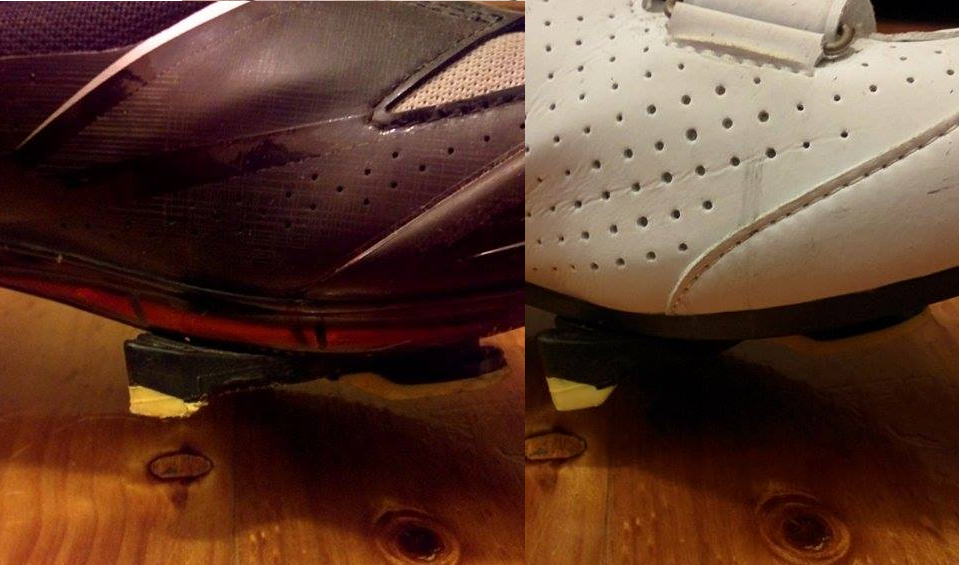
The Giro sole isn't as thin as the Bont soles, but is about half the thickness of the Shimano R241 soles (pictured left).
On the note of the sole, like all carbon fibre soles they scuff easily, so if you want to keep them looking pristine you ought to be careful where you step. Things like rocks etc can do a lot of aesthetic damage.
On the topic of aesthetic maintenance, the matte white finish is particularly hard to maintain. Road grit happily sticks to this surface so you'll need to be vigilant, regular hot water and soap isn't enough to keep these shoes looking clean.
The toe section doesn't feature any protection so if you accidentally kick your tyre (it happens when you have toe overlap) you'll find yourself with black toes.
Giro do offer other colour options (such as high vis yellow and black) which may be easier to keep clean. But if you're happy to put the extra effort in cleaning, the white shoes do look the best of the lot in my opinion.
Cleaning gripes and ratchet swaps aside, I've been extremely pleased with the performance of the Giro Trans E70. Once worn in they're a super comfortable shoe which are stiff and reasonably light. They offer a supportive footbed, and heel cup. Not having to buy an aftermarket footbed is a huge bonus, and really adds to the value of these shoes. The closure system, despite being simple, secures the foot well and evenly distributes the pressure. They might not look as fancy as some of the newer Boa or lace up shoes, but I'd be inclined to say they perform every bit as well.
Disclaimer: The author is not affiliated with Giro in any way. These shoes were purchased from a store for this test.
Comments






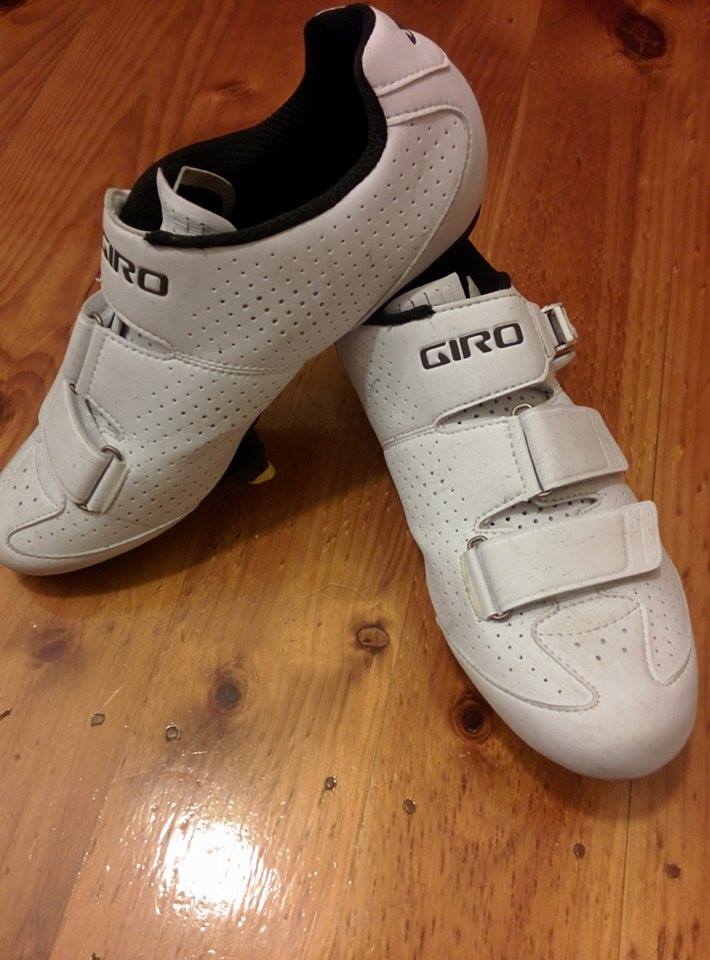


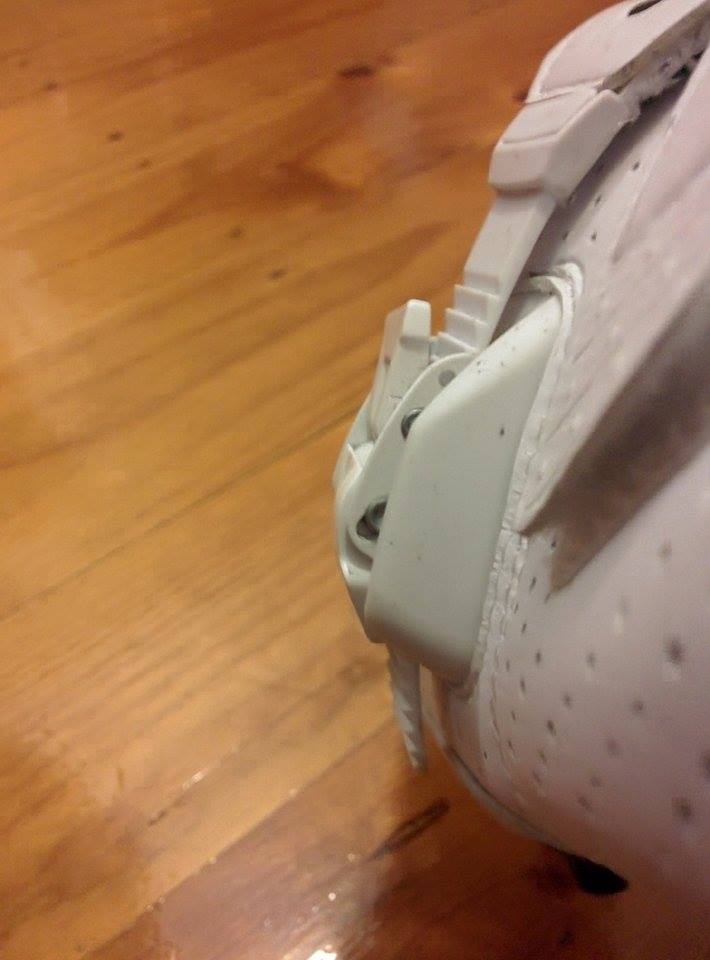
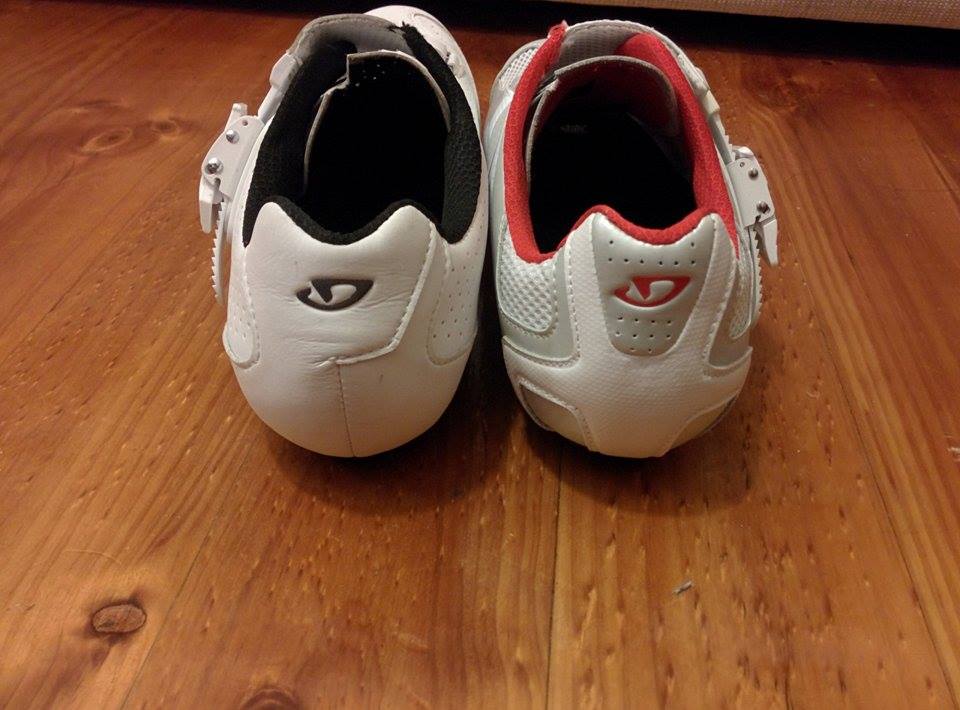
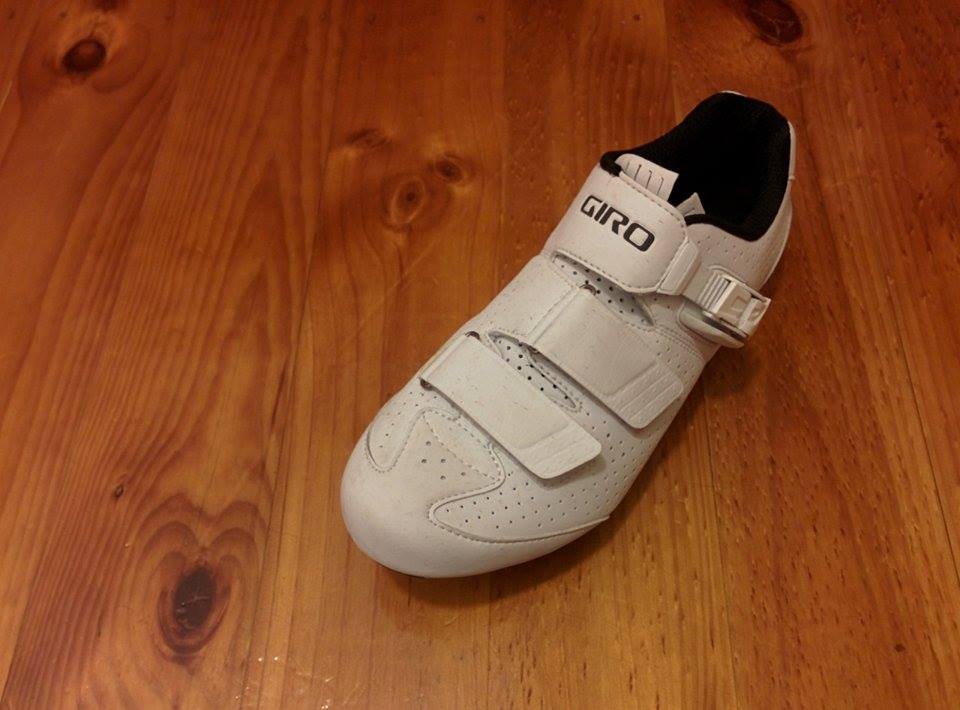
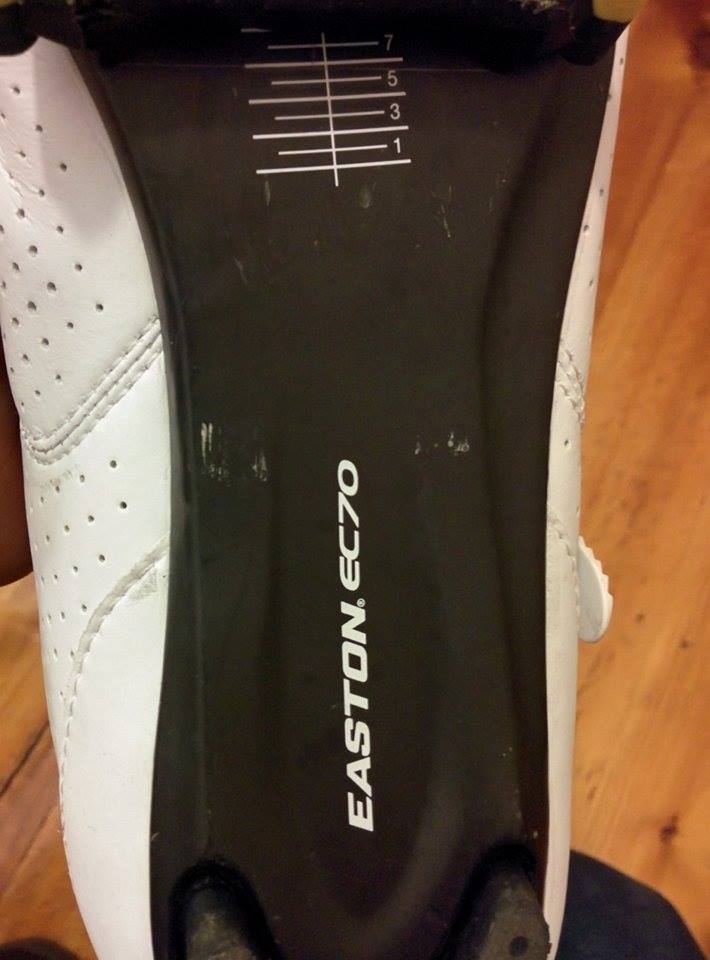
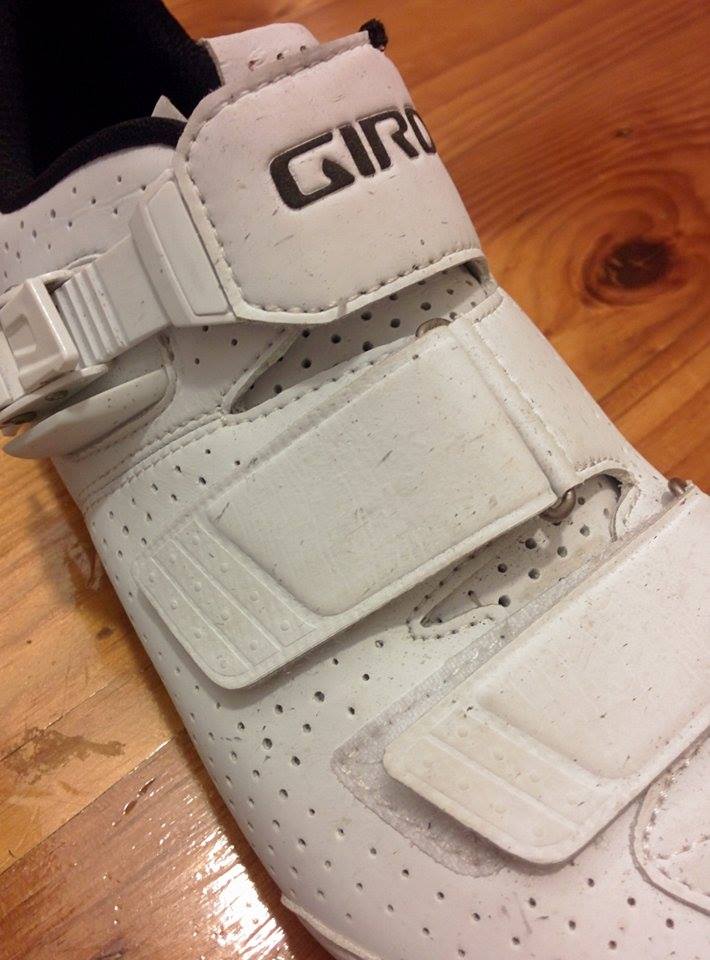
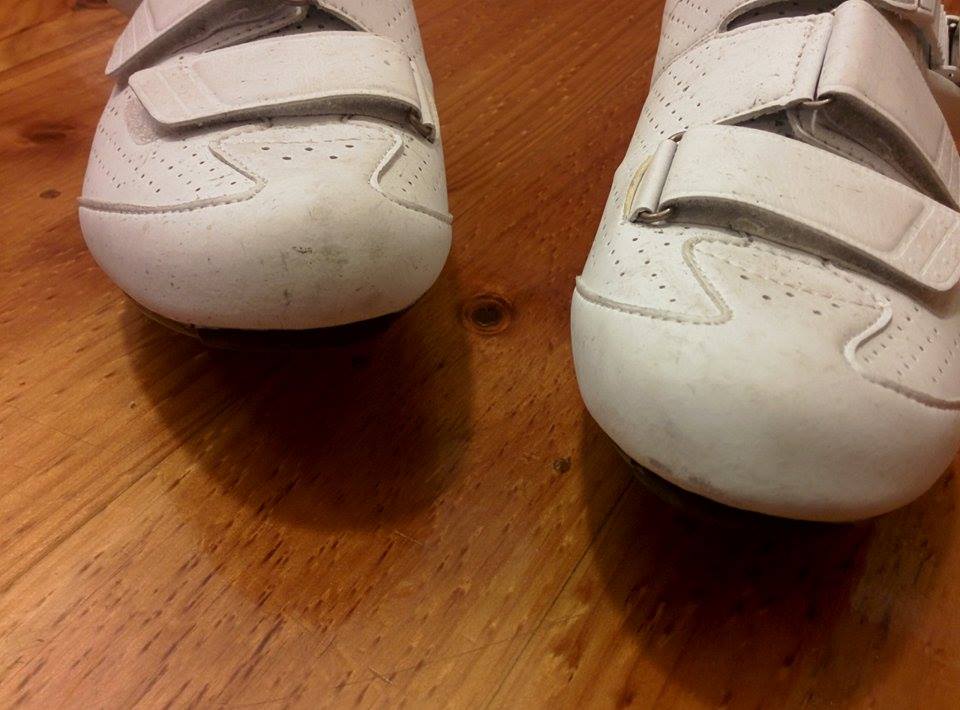
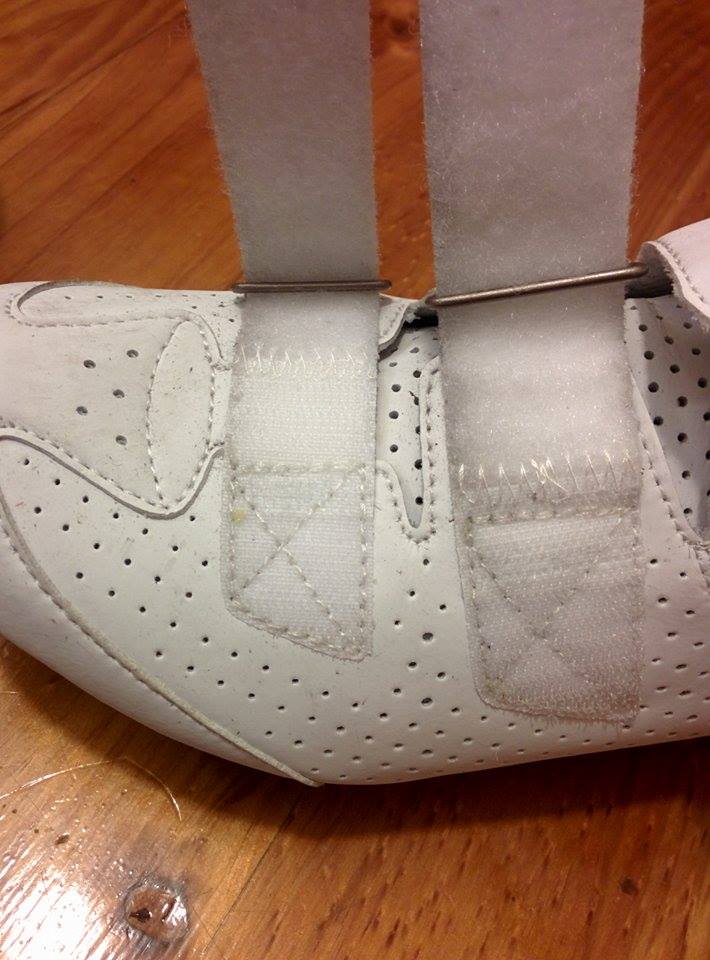
What kind of ratchets did you install to replace the aero style ratchets?
Hey,
I used the old giro ratchets – they are a bit easier to operate on the fly vs the new aero ratchets. Unfortunately Giro use a weird size so Sidi/Bont ratchets don’t seem to work.
How does the position of the cleat mounting holes on these shoes compare to other makes in terms of fore/aft position? I like an aft position for my cleats, and the aft-er the better. I currently use Specialized S-Works shoes.
Hi Robin,
Thanks for your question. The Giro mounting holes are closer to the heel than some other shoes. I’m wearing a size (euro) 42, and compared to my other shoes (Bonts, Shimano) the cleats are quite forward (I can’t move the cleats closer to my toes), whereas with Bont and Shimano I found I had the cleats quite rearward (I can’t move the cleats much closer to my heels).
From this, I would comment that if you prefer to have your cleats mounted quite forward (close to your toes) you may run out of room. I prefer my cleats around 10mm behind my 1st metatarsophalangeal joint, which I would consider to be mid range for my shoe size. In this setting I have plenty of room to move my cleats backward (away from toe), but not much in terms of forward (towards the toe) movement.
I can’t comment on the S-Works shoes as I’ve never owned a pair. Hope the above is useful
What’s the weight?
Hi Stephen, sorry for the late reply. I haven’t had a chance to strip the cleats and weigh the shoes as of yet (lots of training/day job), but when I do I’ll reply below.
Sorry for not including it with the review (this is weightweenies isn’t it?!).
helpful review, thanks!
wow it’s really good!